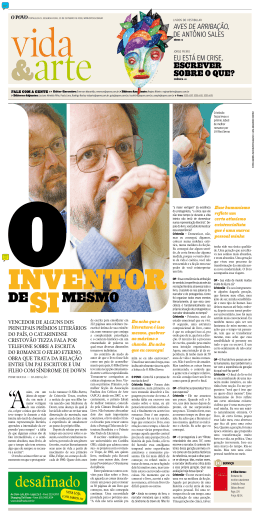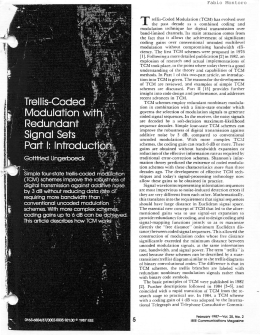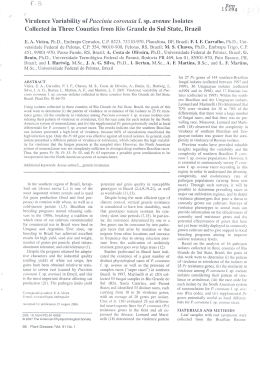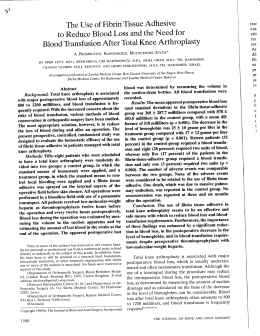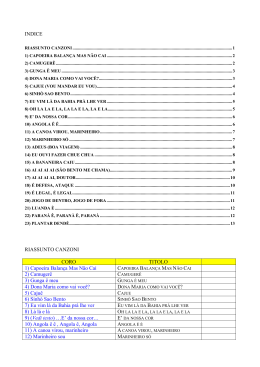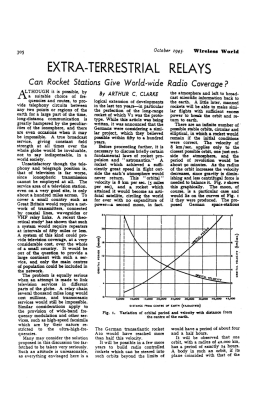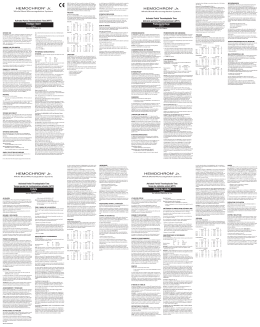TrulfsjifSiull
Mt'dicillt',
Process
1997, 7, 217-219
control
of filtered
w hich counting
R.
Conte,
P.,/icli,lico
A.
ceIls:
method?
Bontadini,
~.. Orsola-Malpighi.
red blood
O.
Cirillo
Bologna.
and
F.
Fruet
Servi~io
di ltnmunoematotogia
e Trasjusionate.
/taly
!«'(",i,.ed 10 February 1997; accepled lor publicalioll
7 Mar 1997
SU~t~tARY. Various
counling
melhods
have been
dt:$cribc:d and repor1ed for process -control of leuco-
We observed a difference in the post-fillration WBC
contenl depending on which melhod of counting was
depleled
used and we feel it reasonable to ask what method should
blood componenls.
The recenl produclion
of
lIigh-efficiency
leucocyle removal fillers inlensifies lhe
lIeed for sensílívily ín detenníníng lhe ever lower resídual
concenlralion of while cel1s (WBCs) ín fillered units.
ln order to assess which method was lhe mosl efficienl
and fcasible in the laboralory for Ihc conlrol of WBCreduced packed red blood cells. we compared Ihc sensílivilY of four counting mclhods: Nageotte chamber analy$i~. now cylomelry. the ftuorochromc melhod by Borzini
al\d Nageollc chall1bcr analysi$ as modified by Prali.
OIIC of lhe most jmpor1ant aims of the BEST group is to
i111prove lhe quality of leucodepleted blood components
fur grcaler safe(y of blood Iransfusion by validating
prolocols sui(able for rou(ine qualily assurance.
Various counling me(hods have been described and
reported for process control of leucodepleted
bJood
co111ponents- The recent production of high-efficiency
Icucocy(e removal fiJ(ers intensifies (he need for sensilivilY in de(ermining the ever lower residual concentralion of while cells (WBCs) in fillered unils.
CJcarly lhe lower limit of accurale delec(ion and t11e
precision of lhe method used for counting residual WBCs
are key factors in quality control of (hesc blood compoIICnlS (Dumont et al-, 1996).
In order to asscss which melhod was lhe most cfficien(
and fcasible in (hc labora(ory for thc con(rol of WBCrcc.Juccd packcd red blood cclls. we compared lhe sensilivity
of four counling
mclhods: Nagco(lc challlber
allalysis (Massc et al.. 1991), flow cylomclry (Wel1z et
((I., 1991),lhe l1uorochromc lIIelhod by Bor~ini (BorLini
et (Il.. 1995a,b) and Nageollc chamber analysis as modillcd by Prl1ti (Prllti ct al., 1996).
CuITc,pond.:nccTra,(u,ionalc.
4013I1IJul.,l:na.
Dr Robcr1o Conte,
ruliclinico
Ila!y- Te!
() 1997 IJla<:kwell
Scicnce
S.:rvizio
S Orsola-Malpighi,
(SI)
lid
6)64779;
di Immul1uclllalulogia
Via Ma"arcl1li
(ax- (SII
63(,3527
9,
e
be cmployed
in blood componcnt proccss conlrol.
Thc answer mustnaturally
consider that the method is
I
for use by a large number of laboratories. while the
sensitivity of the melhod needs 10 be appropriate to Ihc
goal dcsired.
Key
words:
method,
Blood
filtration,
leucocytes.
units
of
tlow
Nageotte
cytometry.
tluorochrome
charnber .
450:!: 50 mL
were
collected
in
quadruple systems wilh CPD. Each unil was cenlrifuged
for 7 min at l000g and blood componenls were separated
by an automated separalor (Terumo) inlo packed rcd
blood cells wilhoul
buffy coat and plasma; salineadenine-glucose-mannitol
was added to lhe packed
red blood cells as the preservalive Solulion.
To mainlain the sarne volume and number of cells in
alI experimenls.
3 units of packed red blood cells of
compalible groups were pooled in a single bag. Afler
lhorough mixing in lhe single unit for 30 min al room
Icmperaturc. lhe packed red blood cel1s werc divided
cqually inlo Ihrce bags of aboul 280 mL each. Fillrations
werc pcrfonncd on units storcd al 4 °C for 24 h.
Wc uscd Ihrcc fi)lers dcsigned by lhe manufaclurcrs
for high-efficiency
leucocyle removal: Biofil R 01 Max
(filler
A), Terumo Imugard 400(fillcr
B) and Pall RCZL
(filler C). For cach filter. we evaluated lhe residual
number of WBCs by each lechique in 20 fillered unils.
lne tillratjon procedure was pcrfonned following Ihc
manllfaclurcrs'
inslruclions.
Wo .IArtcd Ihc filU'.lion pr0<:edure wilhj" 10 mil1 of
rcmoving
lhe packed red blood cells from
lhe
refrigeralor.
Ali tiltralion
was carried oul by gravily.
No prefiltration rinsing of filters with sali"e Solulion was
pcrrorl1\ed nor was any pressure applied to 1he filtralion
217
218
R. Collle ct al
Table
Filccr U
Filler A
0.43 =
0-04 =
(1-04=
0.007 =
0.36~O.15
0-()6 ~ O-O.l
0.04 ~ 0.02
0-006 ~ 0.004
r'illcr
0.20
0-03
(1-02
0-004
proccdurc. Thc distancc bctwccn rrcfiltration
and postfil(ration pac~cd red blood cells bags was about 120 cm.
We evaluated
the prefiltration
and pos(fil(ration
volumes of packed RBCs by dividing (he nct volumc
by the specific gravity (1.05). Both pre- and rost-fil(ration samples wcrc analyscd by au(oma(cd counting
procedurcs
in duplicate
(Gcnius,
SEAC. f1orcncc,
I(aly); furthermore. the post-fil(ration spccimcns with a
vcry low concentration
of WBCs wcrc countcd by caclt
of the following mcthods.
Nagcotte chamber analysis. One hundred micr()litrcs
of thc sample was mixed with 900 p.L()fTurk.s
s()lution.
Evaluation by light microscopy was pcrformcd by two
inves(igators coun(ing one full grid of (he Nageot(e
chambcr (50 p.L). and the final rcsul(s wcre cxrrcsscd
as a mean. Wc calculatcd (hc final WBC conccn(ra(i()ns
as follows:
(numbcr of coun(cd cclls xlO)/volumc
coun(cd. whcrc 10 is thc dilu(ion of thc samplc.
f1ow cytomc(ry .Thc flow cy(omc(ry count was pcrformcd as described by Wenz: 100 p.L ()f packcd RBCs
was mixcd with thc following rcagcnts: 600 p.L of formic
acid at 1.2mL of distilled watcr, 265p.L of carbonatc
bllffcr (pH 7.4 ). 100 p.L of parafonnaldchydc
( IO 9 L -I
of distillcd watcr) (Immunoprcp
EPICS, Coulter Diagnostics Hialcah. R., USA) and 7 p.L of polyxc(hylcnc
cstcr; 100 p.L of a solution containing propidium ioúidc
().12
{
I. Avcrage
rc...idu:ll WRC~ r><10"
mc:ln :!: SD) in lhe po~I-'illr:llion
unil..
mca~urcd by lhe (our counling
mclh(KI~
:!: ().12
().().'i :!: ().()3
().{).'i :!: {).()J
().()()5
:!: O.()(»)
dark, thc tray was ccntrifuged at 650g for 3 min I()
oblain an oplimal cell sedimentation. Both living and
dcad WBCs wcre counled by a nuorescence micro!icopc.
lhe mcan value of 20 replicales was laken lO calclllalc Ihc
WBC concenlration per microlitre and the WBC conlcnl
in Ihc poslfiltration unil.
Nagcolte chamber modified by Prati. Ten millililrcs ()f
thc poslfillralion
samplc was addcd to 40 mL of ~'7r
paraformaldchyde.
The lubes were cenlrifuged al R(){)g
for 10 min. The supcmalanl was discarded 3nd the moi!il
pcllet was resuspended with Turk.s solulion to 3 fin,,1
volumc of 500 I1.L. Thc suspcnsion W3S loadcd iJ1 "
!iinglc-grid Nageolte ch3mber. After 15 min incllbaliml
in a humid environmenl two invesligalors counted ()(IC
full grid of lhc Nageotlc chamber (50I1.L), and thc fin.11
resull!i werc expressed as 3 mean. The WBC c()nccnlr;l.
tion pcr microlitrc
was cfllculaled by the foll()wiJ1!!
formul3: (number of WBCs in 5011.L of s3mple x I (1)1
10.()()().
In lhc absence of any reference counling
mclh()d. Ihl.
accuracy ~f the melhods employed wa~ confirmcd hy
dilulion studies. A sample of WBCs was serially dillltco
by 3dding WBC-dcplclcd
packed RBCs 10 rcach a fil1;IJ
djlulion of 10-0.001 WBCs I1.L-I. We evalualcd thl'
WBC concentralion
of lhe samples by lhe melh()d~
dcscribed and plolted Ihc dala oblaincd as a funclion ()r
in phosphatc buffcr salinc (0.1 gdL -I, pH 7.4). Bcforc
(he analysis wc added 500p.L of rhosphatc buffcr salinc
Ihc cxpeclcd concentration.
The measured v31ucs of lhl'
experimcnt~
lhe correlation
(o cach sample to rcducc viscosity.
ranged from 0.997 to 0.999 according to the scn~ilivily
Flow cytomc(ry
was
~howed
tllat
c()cflicicnl~
pcrformcd lising a flow cy(omctry EPICS (Coul(cr) al1d
(hresholds (elcctronic gatc) wcre sct using rcd fluorcsccnce (R.2) vs. fof\vard scatter (FSC) and FL2 vs. sidc
of the lechnique perforrned.
The dat3 of lhe average residual WBCs conlcnl
scattcr (SSC); wc also used FSC vs. SSC cy(ograms
melhods are summarized in Table I.
The count pcrforrned
with the Nageollc
(o
dctcct thc WBCs by their spccific light-SC3ttCril1g prorcr(ics. Thc volumc 3nalyscd was takcn as (hc diffcrcncc in
milligrams
in thc wcigh( of thc tubc bcforc and af(cr now
cy(omctric analysis. The fin31 WI3C Conccnlra(ion pcr
microlitre was dctermincd as follows: (numbcr of flliorcsccncc
cvcnts
pcr
16.72)/(volumc
couII(cd).
whcrc
posl-fillration
unils
measured
by
the
four
in tll1:
counling
mcthou
showcd thc numbcr of Icucocytes in lhe po~l-fillrali()(1
uníl 10 bc 0.36 :!: 0.15, 0.43 :!: 0.2 and 0.29 :!: 0.12 x 1(r'
wilh fillcrs A, B and C, rcspcctively. By now cyl(}mclry
and nuorochrome analysis we found aboul Ilog fcwcr
Icucoytcs than wilh thc Nageottc chamber. Thc "h~oilitc
numbcr of WBCs ob~crved by now cylomclry
'v,,~
16.72 is (he dilution.
f1uorochrom3tic
technique. We followed (he mc(hod
dcscribcd by Borzini. Briefly, 20 aliquo(s of (hc pos(.
0.06 = 0.03, 0.04 :!: 0.03 and 0.05:!: 0.03 x 106 whcrc"s
hy lhc nuorochrome melhod thc absolule numbcr w"s
fil(ra(ion
0.04 :!: 0.02. 0.04 :!: 0:02 and 0.05 :!: 0.03 x 10(,. rc~pcc.
wells)
sample (1 p.L) wcrc dispcnscd in (W() rows (20
of a Tcrasaky
fluorochromc
pcr well
tray. Af(cr
and
aúdi(ion
15 min
of 5 p.L of
incubation
in thc
tivcly, wilh fillcrs A, B and C. With lhc N"I.:!C()IIC
chambcr analysís as modified by Prati \ve oh~crvrd
() 1997 Blackwc" Scic:ncc:
Lld. Tr(/nsfus;onM..d;c;".. 7.217-211j~
..;..;
Process c0/1lrol (1 jiltered RBCs 2'9
I{Ef:EI{ENCES
BoC7.ini, P., Rjva,
M.. Dassi, M., Proscrpio,
Gangi, L., Galcsi, A., Vjlla,
T. & Sciorelli,
P., Mcssina,
A.,
G. ( 1995) A vcry
simplc melilod for counting wilile cells in pla(ele(
coll.:Clcd by apileresj:;. Tral/sfusi(Jn, J5, 884.
unjl:;
norLini, P., Riva, M. & SciorelJi, G. ( 1995) ConlrulJo Icucocilario emocomponenlj.
Il Servilio Trasf/Isi(Jl/ple, J, 18.
Dulnonl,
L.J., Dlik,
MClllbcrs
W.H..
of lile BEST
Rebulla,
Working
P., Brandwcin,
H. & lile
P;lJ1y of lfle ISBT. (1996)
Pr.tlicill gujdelincs for process vilJidilljon and process conlr01
o'. wflile cell.reduccd
blood CO11\pun.:l11s: rcfJ\Jr1 of 1Iie
BiolllCdicilJ
l~xceJlencc for Safer Trilrls'.u~ion
illg Pilrly 0'. (ilc Il11crnillional
Socic(y
(UEST) Work.
of Ulood Transfusion
(ISUT). 7i{ll/sJi/.fi(Jl/, J6. 11-20.
Mii';';c. M.. Andrcu, G., AIIguc, M., UilbilUII, C, Bcilujcall,
13idcl, M.L.,
Boudar1, D., Calol,
I;.,
J.P., CO(IC, C., I;ollca, G.,
E.. Marcflcsscau,
13.,
Nasr. o., l{obcI1, F.,I{oycr,
D., ScflOt)rlcl1\an, I;., Tardivcl,
& Vidal, M. (1991) A Inulljcenler sludy on lflc cfficiency
G.:rolil, J., HilU, F., Hurcl, C., Lcgralld.
1{.
of
wflilc ccll rcduclion
by fiJlralion
or rcd cclls. Tral/5Jilsion, J I,
H., Cilpclli,
C., Dlik,
792-797.
Prali, D., Brandwcin,
MylJyJa, G., Slroml>cr.
WcrIZ, U., 'or (ilc BEST
W.H., Masse, M.,
R.R., Takaflil~fli,
T., Vyas, G.N.,
Working Parly of Illc ll11cmalional
Sociely of Blood Trilnsfusjon.
( 1996) MullicC111cr cvalualion
of (flc 3% parafonllilldcydc
ll\clhod fur wflilc ccll counlillg ill
Icukocy(.:.r.:duccd
245.
Wcrl/.13..13urll';,
CVC111all;Jlysis
ccl'-úcplclcú
~J I')')]
(11..0:1. \,,~11 ,..l'i~IIC~
1.ld,
rr""Jj""""
,1/"/,,
"1",
7, 217
! 1'1
rcd fllood cclls
Vn.\ ..\il/lg/1illis,
10, 2.j 1-
E.I{., Lcc, V. & Millcr. W.K. (1991) A rarc.
llIodcl for qua111i'.yjng wflilc cclls in wfli(c
blood.
T,.(JI/.fJi,si()n. JI,
156-159.
I
Download

